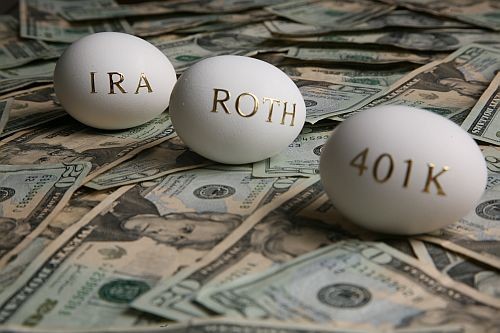401K Withdrawal Strategies The Good and the Bad
Post on: 19 Июль, 2015 No Comment

September 14, 2014 | Comments (4)
Few of us are offered pensions by our employers anymore, but many of us are able to contribute to 401k accounts — ideally receiving some matching contributions. It’s smart to sock away as much as we can for retirement, building a fat nest egg. But we need to be smart about how we withdraw those savings, too. Read on for some smart and not-so-smart 401k withdrawal strategies.
Bad moves
Let’s start with suboptimal 401k withdrawal moves. One of the worst is cashing out prematurely — for example, when you change jobs. In this situation, your options are generally to:
- Leave the money in the 401k account;
- Transfer the money into your new employer’s 401k;
- Transfer the money into an IRA; or
- Cash out.
Many cash out, but that’s shortsighted: 401k funds shouldn’t be viewed as a potential midlife windfall, but as the critical retirement savings they are. If you cash out. your retirement will likely be poorer. Further, 401k withdrawals prior to age 59-1/2 generally trigger a 10% IRS penalty, not to mention taxes.
You’re often better off rolling that money into a new account. Just be careful not to roll it into higher-cost investments. Your new employer’s 401k, for example, might sport significantly higher fees than your old account. Consider the cost of each option and remember that you can always open a low-cost IRA account at a good brokerage .
Finally, there are required minimum distributions to consider. RMDs generally must be taken beginning at age 70-1/2. Technically, you have until April 1 of the following year to take that first distribution. However, while it may seem appealing to delay your first 401k withdrawal until the next calendar year, you’ll also have to take that year’s distribution by Dec. 31 of the same year, and two withdrawals within the same year will likely increase your taxes due, potentially even bumping you into the next tax bracket. If possible, it’s often best to start your RMDs by Dec. 31 of the year in which you turn 70-1/2.
Good moves
While cashing out your 401k is usually a mistake, a particularly good move is to transfer your 401k withdrawal into an IRA when you change jobs. That’s because IRAs often feature low fees and allow you to invest in a wide range of stocks and bonds. along with many mutual funds and ETFs. A typical 401k will offer a far more limited investment menu. IRAs let you name any beneficiaries you choose, too, whereas 401ks require that your spouse be your primary beneficiary.
It’s also smart, whether you’re moving your 401k withdrawal money into an IRA or into your new employer’s 401k, to have your former employer either transfer the money directly or give you a check made out to the new custodian — not to you. If you personally take possession of the funds via a check, your employer will withhold 20% of the account balance for taxes, which you’ll get back at tax time if you’ve deposited the account balance into your new 401k or an IRA. You will have to deposit the funds in your new tax-advantaged account within 60 days — plus the withheld amount, even though you haven’t received it. Fail to do so, and the money will be considered withdrawn, rather than transferred, and there will be serious consequences. You surrender the 20% withholding as taxes owed, and you may owe additional taxes. And any taxable portion of the distribution that is not rolled over may be taxed at 10%, too, if you’re younger than 55.
Another often savvy move, if you can swing it, is the bridge strategy, where you start making 401k withdrawals early so that they help support you while you delay receiving Social Security benefits. For each year that you delay benefits past your Social Security-designated retirement age (67 for many of us these days), your eventual benefit will increase by 8%, up until age 70. Thus bridging your income gap by withdrawing money from your 401k a few years earlier than you may have intended can help you increase your Social Security payout by 24%. A secondary benefit is that drawing down your 401k will make your eventual, taxable RMDs smaller. Not everyone loves this approach, as it involves withdrawing 401k funds that could have kept growing. However, growth in a 401k is not guaranteed, while the 8% Social Security bump is.
Finally, consider saving for retirement via a Roth 401k if possible. If you do, your contributions will be made with post-tax money, but your ultimate 401k withdrawals will be tax-free, and there will be no RMDs, either.
Spend more time reading and thinking about your retirement accounts, and you’ll likely encounter some other attractive or regrettable strategies. The more you learn, the more comfortable you’re likely to be in retirement.
How to get even more income during retirement
Social Security plays a key role in your financial security, but it’s not the only way to boost your retirement income. In our brand-new free report, our retirement experts give their insight on a simple strategy to take advantage of a little-known IRS rule that can help ensure a more comfortable retirement for you and your family. Click here to get your copy today.














